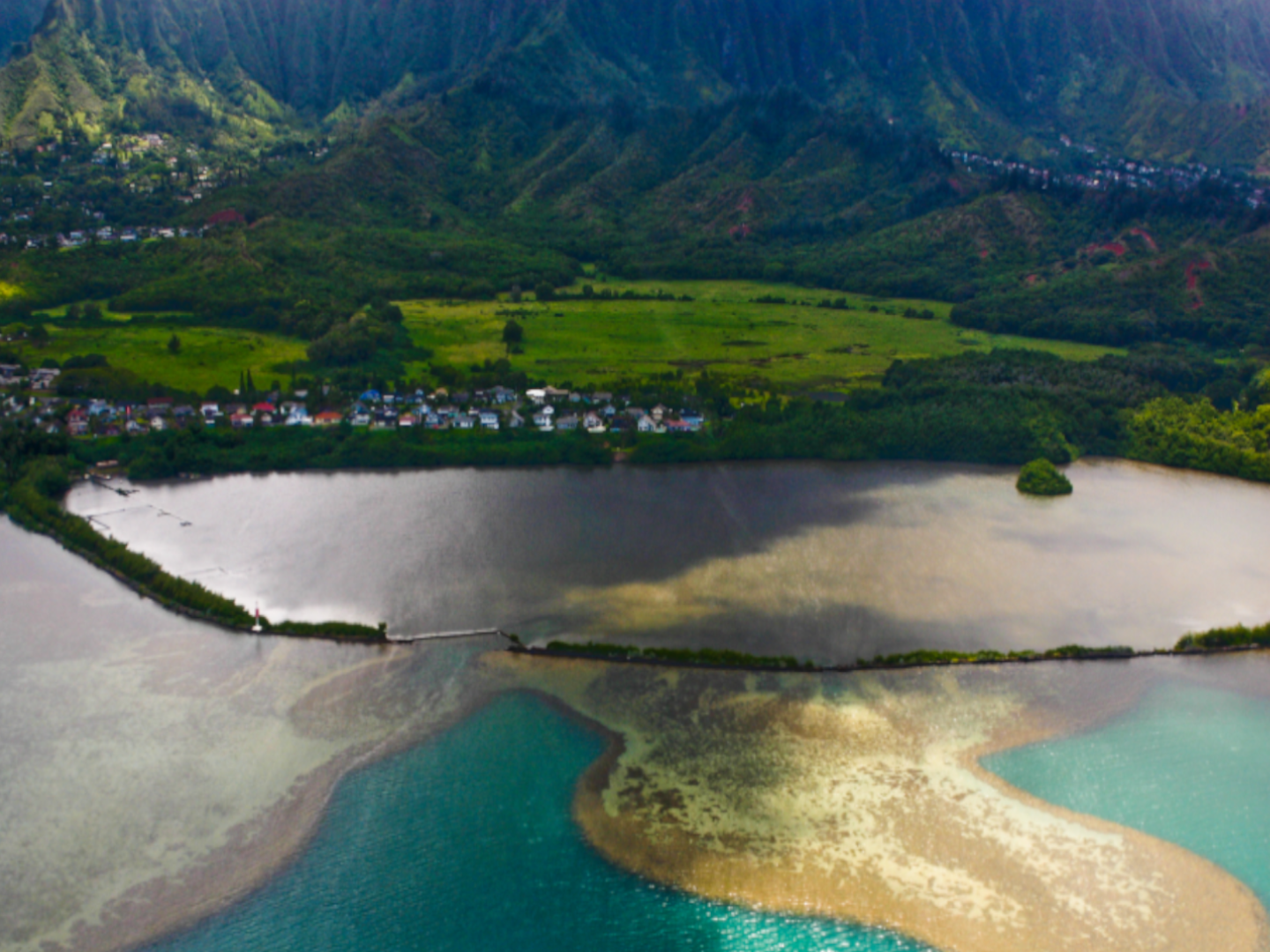

Repairing a wall at Hale ‘O Lono Fishpond in Hilo, Hawaii.
Traditional Hawaiian fishponds, or loko i‘a, were once prominent along the shores of the Hawaiian Islands. In the late 1700s, at the time of James Cook’s arrival, there were more than 400 fishponds in operation producing an estimated 2 million pounds of fish per year. These fishponds provided a stable source of protein which could sustain populations during food shortages.
Today, most Hawaiian fishponds have fallen into disrepair but local community organizations are working together to restore traditional fishponds for cultural and educational purposes, as well as to provide a source of nutritious food. To assist in these efforts, OI scientists developed captive-rearing techniques for native Hawaiian food fishes, including striped mullet (Mugil cephalus) and milkfish (Chanos chanos), to help revitalize ancient Hawaiian fishponds which represent the oldest and most culturally significant form of aquaculture in the U.S. Recently, OI provided more than 100,000 mullet fingerlings to several Hawaiian fishponds on the islands of Oahu and Molokai in an effort to promote local food self-sufficiency.

Adult striped mullet known in Hawaiian as ‘ama‘ama.
Source: NOAA Fisheries

